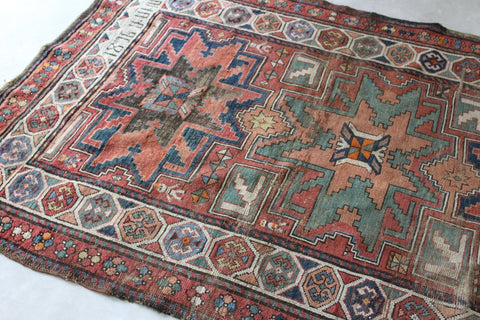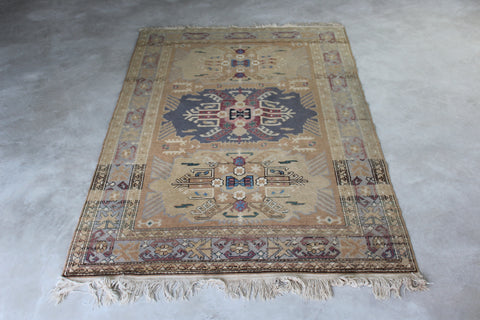Many antique rugs originated from the Caucasus area. The Caucasian mountainous region is made up of many districts. It is an area situated between the Black and Caspian Sea and mainly occupied by Armenia, Azerbaijan, Georgia and Russia. They been fought over and conquered many times throughout history, has had many influences throughout the years and is very culturally diverse.
These antique rugs were produced using natural materials found exclusively in each region so colours can be specific to certain regions, depending on the herbs, plants, vegetables, roots and minerals found in that area. Many colours were made by extracting, crushing and even roasting.
- Madder red will have come from the root of the madder plant and can produce a variety of shades from rich reds to light oranges.
- Cochineal can be obtained from the female cochineal beetle.
- Yellows came from turmeric, chamomile, onion skins and saffron etc. Indigo plants were fermented to produce various shades of indigo
- A deep green was perhaps the most difficult colour to create and was a sign of a very well made rug - most greens were created with an indigo dye and overdyed with yellow.
- Browns could be created from walnut leaves and husks or volcanic soil, tannic acid could be used to oxidise the wool. Brown sheeps wool was also sometimes used.
- Black was obtained by used brown wool dyed with indigo.
- White fields were often bleached or just natural wool
Obviously this isn't an exclusive list, just a snippet of the amazing ways that colours may have been produced over the years. Traditional skills that will have been passed from through the generations. The variety of colours are a large part of identifying the rugs origin.

Pattern details traditional to one region were often shared with other district weavers - rugs such as this one seems to have patterns that were shared between the Garabagh district and the Shirvan district. Shirvan rugs were often made on cotton foundations rather than 'all wool' (which included the warp and weft). This Antique Armenian Garabagh Rug shows a column of central medallions which is characteristic of Shirvan rugs (East Caucasus), but the construction, reverse knotting and looser knotting is consistent with Garabagh rugs. Antique Armenian rugs with inscriptions often show Roman numerals, but as the weavers were often illiterate, this may not always be right. The colours, especially the orange dye suggests that this is a pre-1900 rug.
Antique Wool Erivan Rug
Another example of patterns and designs being shared is this Antique Wool Erivan Rug. The pale caramels and pale blues are typical of the Erivan colour pallette, yet the characteristic stylised motifs drawn in totemic form, originate from the Kuba district of the North East Caucasus. The more muted tones are indicative of a chemical washing process known to soften colours, that took place around 1910 and 1920, when it was believed that the western market favoured muted tones.
We have a large and varied collection of antique rugs and carpets, which can be viewed in our Soft Furnishings collection. Whether you're looking for small rugs to use a wall hangings or accent rugs, or a large area rug to completely change an interior.



